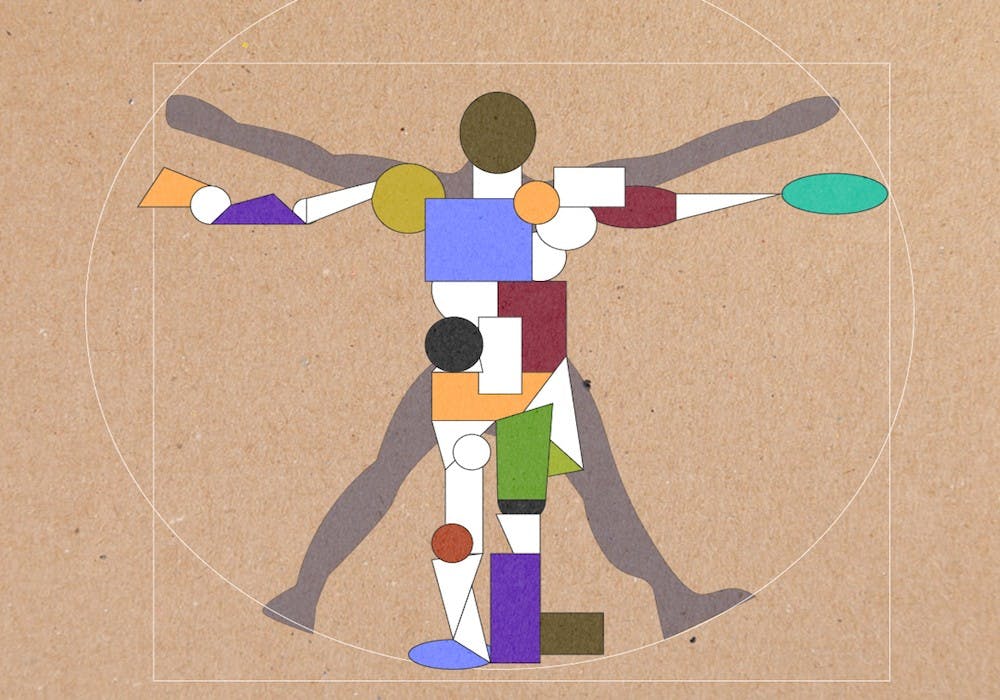The effects of the media on body image are serious and problematic for college students around the country, including for students ASU.
ASU students, often avid consumers of media, are constantly bombarded with unrealistic representations of beauty. TV, movies, magazines, dolls and worst of all, the fitness industry, all create the illusion that an impossibly high level of beauty is attainable.
A meta-analytic review in the International Journal of Eating Disorders demonstrated that there is a strong drop in people's body satisfaction after exposure to "thin media" compared to trials with average models, plus-sized models and inanimate objects. Fortunately, there are efforts to resolve this issue, but these efforts, for the most part, tend to ignore men.
The main ASU program addressing body image issues is the Body Project, which was designed to help reduce body dissatisfaction, unhealthy dieting and eating disorder symptoms in college-age women.
This is fantastic news for women, but not much help for the other 50 percent of the population. Men are exposed to just as many unrealistic physique ideals in many of the same fashions — fitness magazines use lighting and editing to portray obscenely muscular men, action figures have eight-pack abs, and actors use performance-enhancing drugs to get ripped for roles in movies and TV shows.
The negative effects of exposure to "thin media" can have much more drastic effects on people who are prone to eating disorders.
Aaron Krasnow, an associate vice president at ASU Counseling Services, said that while there are a complex variety of internal factors that need to be in place, perceptions of external expectations heavily influence the development of eating disorders.
"(For an individual to develop an eating disorder) things around them need to reinforce messages about idealized body shape or size," Krasnow said. "That can cause people to recognize that ‘this feeling that I have inside, maybe I would feel better if I looked thinner or more muscular.'"
The effects of this phenomenon are so widespread that according to a survey of ASU students by the American College Health Association, 46 percent of students did not say that they were satisfied with their body. Nearly 5 percent had experienced an eating disorder in the last year.
There is little evidence to suggest that men are somehow immune to the effects of this type of socialization on body image.
“Men and women struggle with anxiety, they struggle with social issues, they struggle with feelings of perfection, and feelings that they belong or don’t belong," Krasnow said. "That’s a human condition."
Furthermore, according to Bradley University, a staggering 95 percent of college-aged men reported some level of dissatisfaction with their body.
While men may tend to see themselves as not muscular enough, as opposed to too fat, they are still prone to taking unhealthy approaches to change their bodies.
The Journal of Counseling & Development suggests that eating disorders are about as common in men as well as women.
This begs the question: if negative body image, eating disorders and substance abuse are not gender specific issues, why are some of the aid programs? The answer, it seems, is simply a result of supply and demand — while many men suffer from these issues, it is rare for them to seek help.
“In traditional gender roles, the language of men speaking up is more restrictive. Some men are taught in their lives that speaking up is a sign of weakness, or that you are supposed to be 'tough',” Krasnow said.
In the long run, breaking down traditional gender roles will benefit society as a whole. In the meantime, the gender-inclusive solution to negative body image is to reduce the reinforcement of body ideals across the board.
“People are much less likely to develop eating disorders, although it’s still possible, when the environment around them is more accepting of shapes and sizes,” Krasnow said.
Pointing out that Barbie is not a realistic standard, calling for plus-sized women on the runways, and getting ASU resident advisers involved in the Body Project were great strides forward.
Now, let’s realize that Ken isn’t a realistic standard either. We should demand plus sized-men in the fashion industry and create resources for ASU men suffering from body image issues. We may be far from a body-accepting campus culture here at ASU, but we will get closer by striving together as one people instead of separately as men and women.
Reach the columnist at rdougla3@asu.edu or follow @rossdougla on Twitter.
Editor’s note: The opinions presented in this column are the author’s and do not imply any endorsement from The State Press or its editors.
Want to join the conversation? Send an email to opiniondesk.statepress@gmail.com. Keep letters under 500 words and be sure to include your university affiliation. Anonymity will not be granted.
Like The State Press on Facebook and follow @statepress on Twitter.




